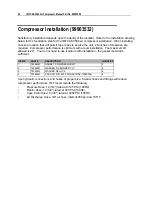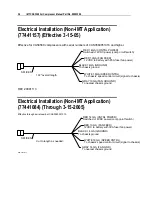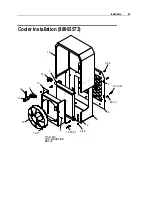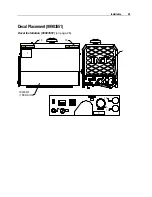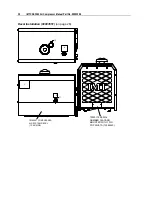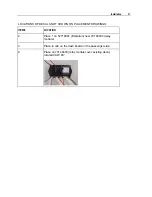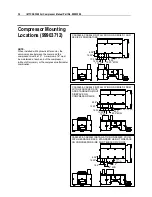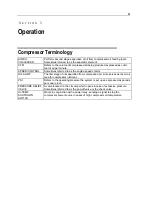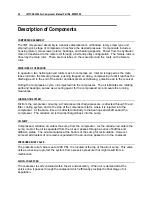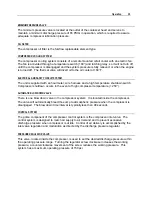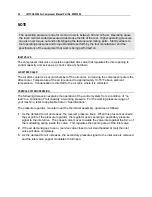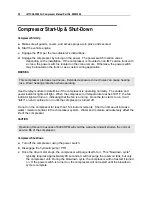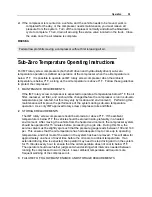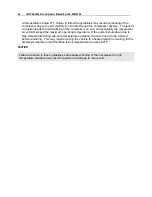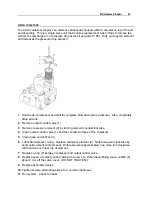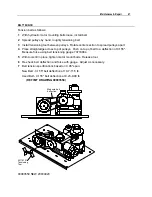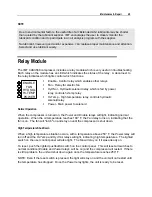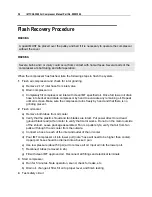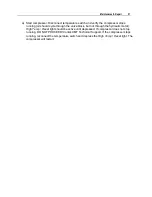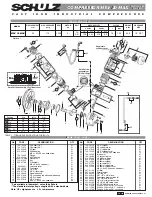
36
IMT CAS3560 Air Compressor Manual Part No. 99903566
NOTE
The operating pressure range for most air tools is between 90 and 125 psi. Operating above
the tools' recommended pressure will decrease the life of the tool. Higher operating pressure
can also over torque nut and bolts fatiguing the fastener and mating parts. Strictly adhere to
tool operating pressures and torque standards set forth by the tool manufacturer and the
specifications of the equipment that work is being performed on.
INLET VALVE
The compressor inlet valve is a piston operated disc valve that regulates the inlet opening to
control capacity and serves as a check valve at shutdown.
AIR AFTERCOOLER
The air after-cooler is a second chamber of the oil cooler. Air leaving the compressor enters the
after-cooler. Temperature of the air is reduced to approximately 10-15°F above ambient
temperature. Condensation is directed to the air tank, where it is collected.
CONTROL SYSTEM OPERATION
The following discussion explains the operation of the control system from a condition of “no
load” to a condition of “full capacity” at working pressure. For the working pressure range of
your machine, refer to applicable data in “Specifications”.
The pressure regulator, mounted near the fan/cooler assembly, operates as follows:
1
As the demand for air decreases, the receiver pressure rises. When this pressure exceeds
the set point of the pressure regulator, the regulator opens sending a secondary pressure
signal to the inlet valve. The poppet valve moves towards the valve inlet against the force of
the modulating spring inside the valve. This regulates the opening area of the inlet valve.
2
If the air demand goes to zero, (service valve closed or air dead headed at tool) the inlet
valve will close completely.
3
As the demand for air increases, the secondary pressure signal to the inlet valve is removed
and the inlet valve poppet modulates to full open.

